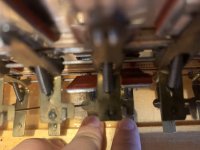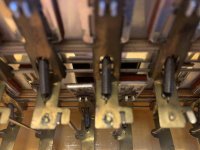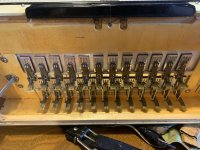whiiskeyjack
Newbie
Hi! I really love the accordion, and I’ve always wanted to learn, I already play a couple of instruments so I thought I’d get one secondhand to see if it’s something I actually enjoy! However, the one I ended up with has a stuck bass note somewhere - the button itself isn’t stuck, but rather the mechanism on the inside is jammed somewhere. It actually took me an embarrassingly long time to realize that accordions don’t actually just make noise all the time (like bagpipes). Unfortunately, there’s no one near me that fixes accordions, so it looks like I’m going to learn to fix this thing before I learn to play it. So I’m wondering if there’s any good resources for taking apart that section of the instrument? Or if you have tips like anything to avoid, any important tools, or a super quick fix (not likely I’m sure, but I can dream!), anything helps! Thanks!



